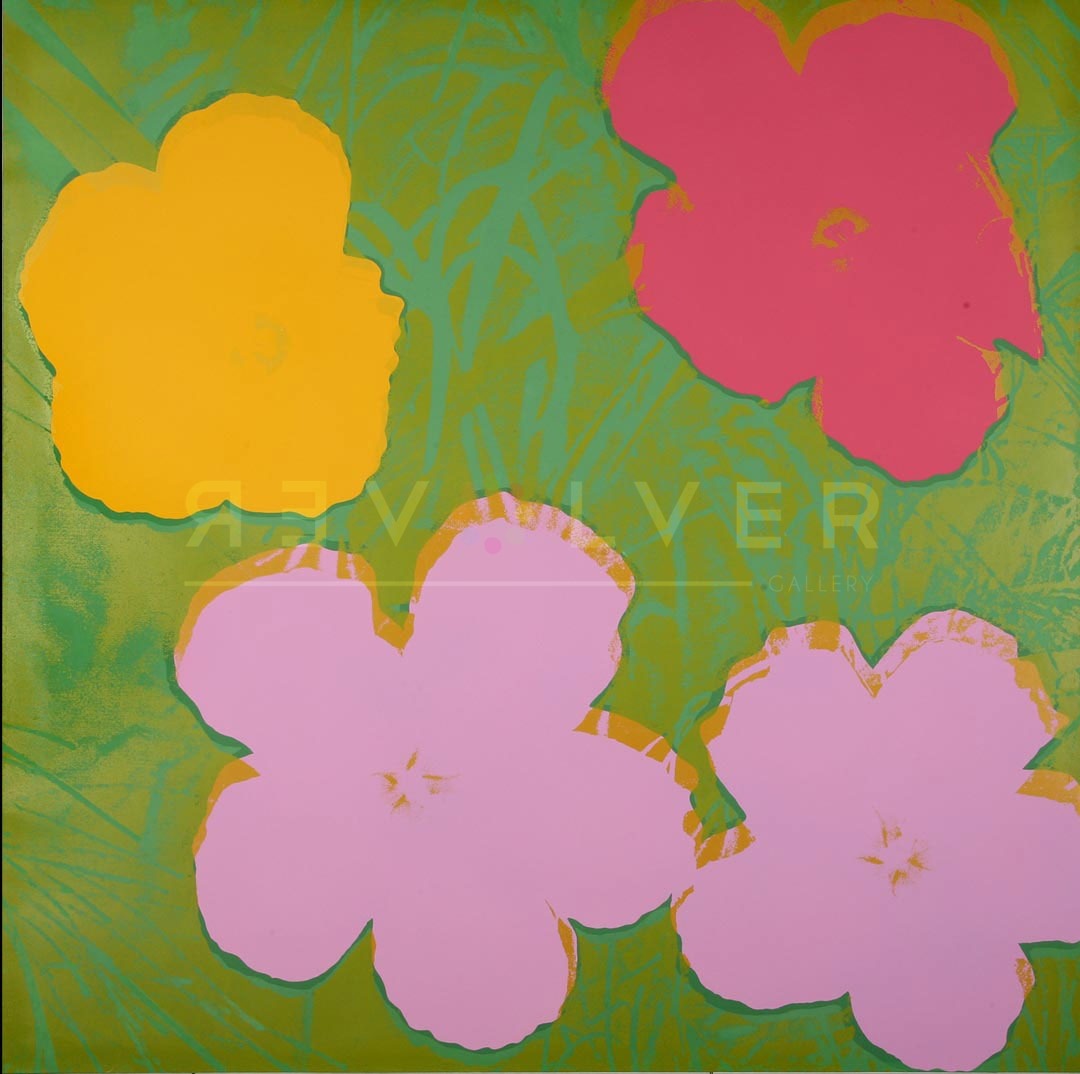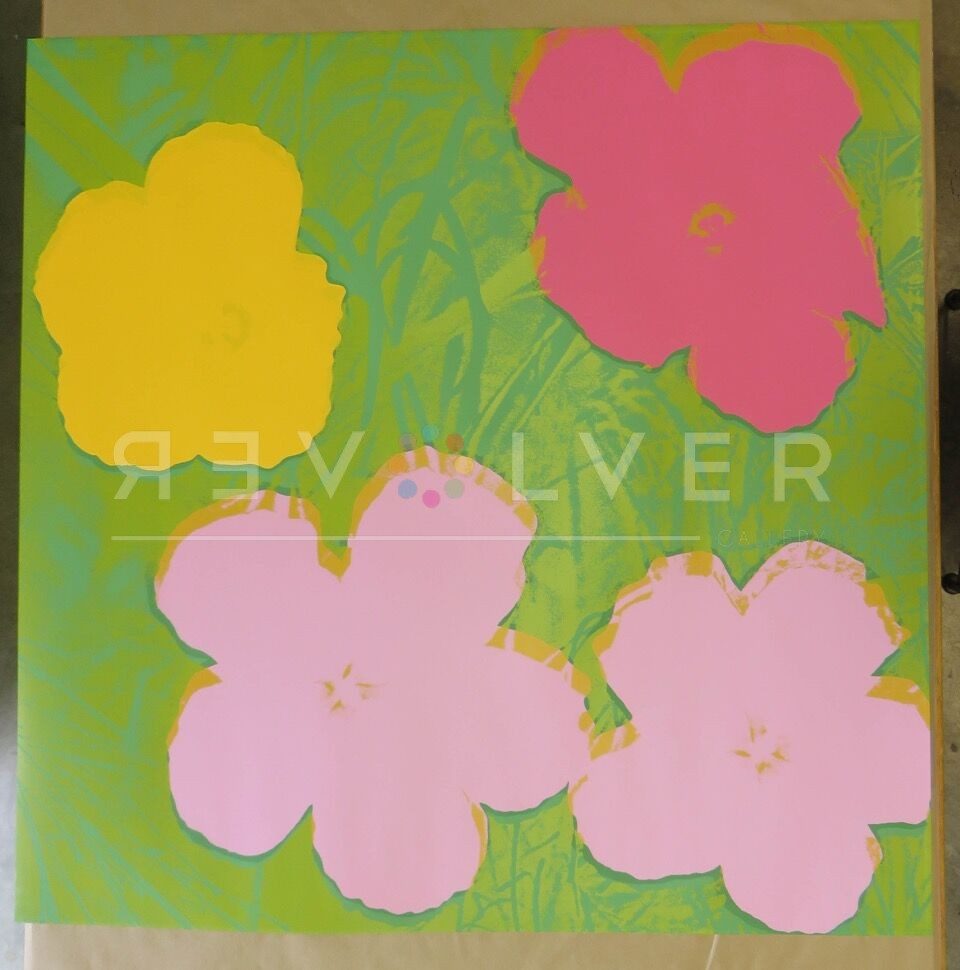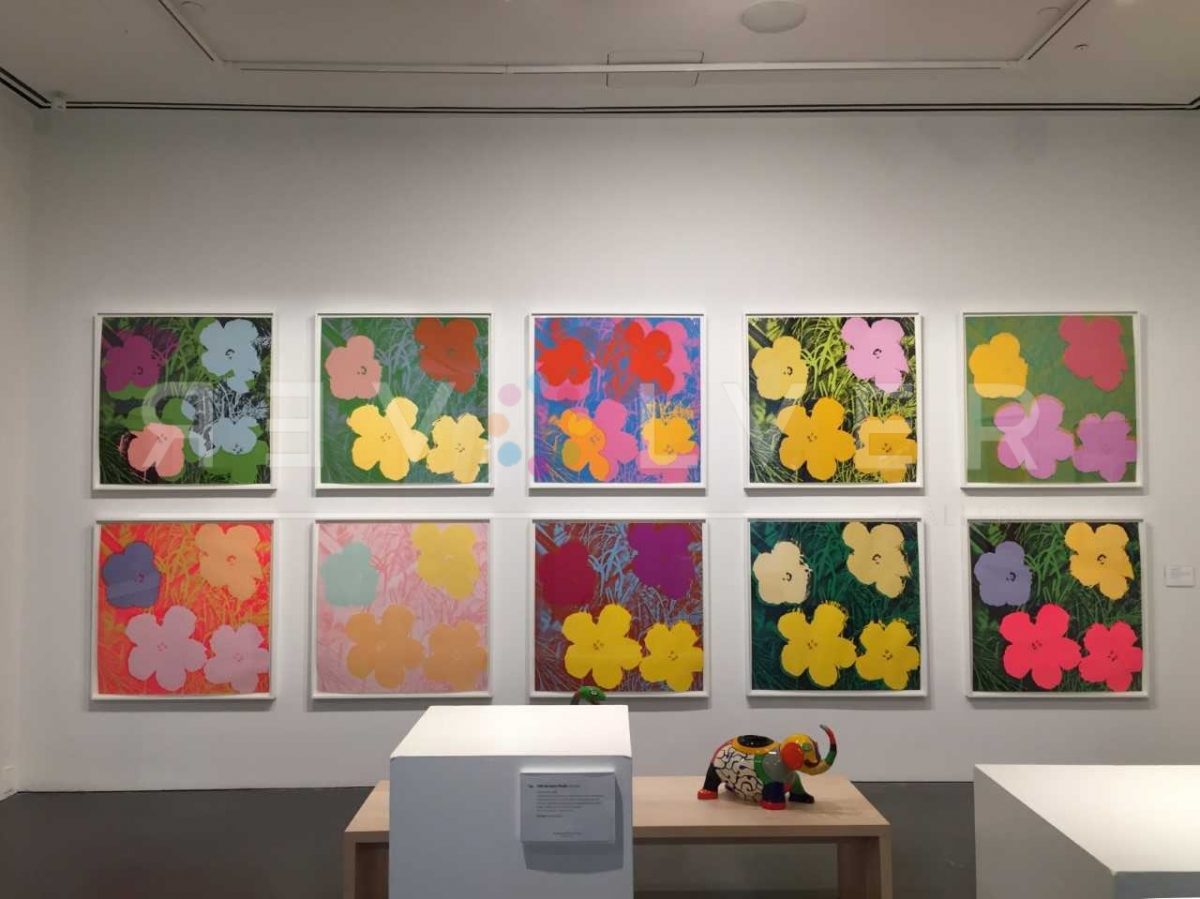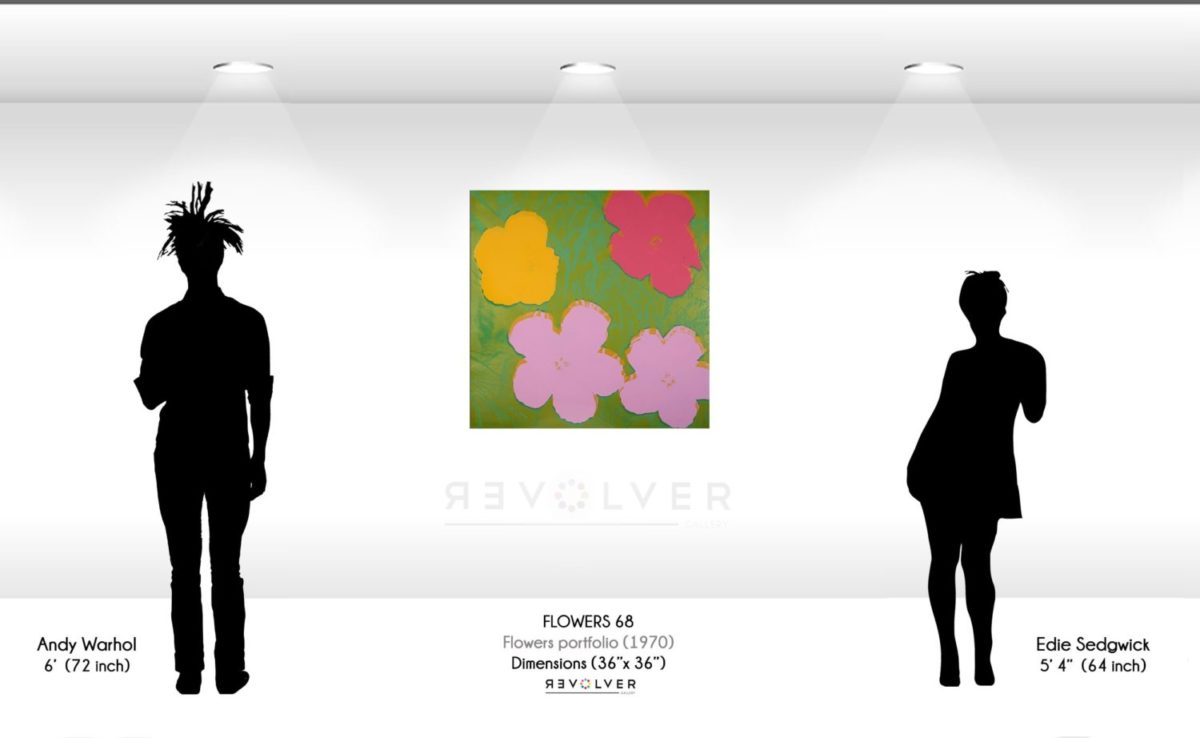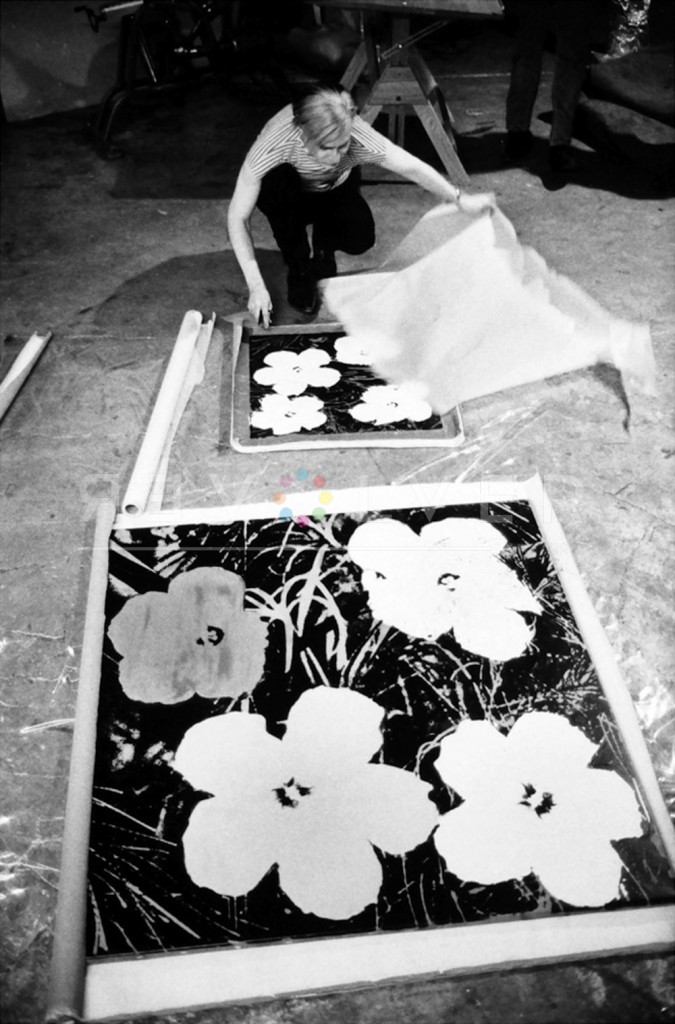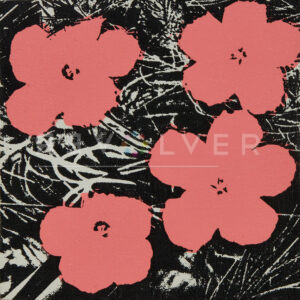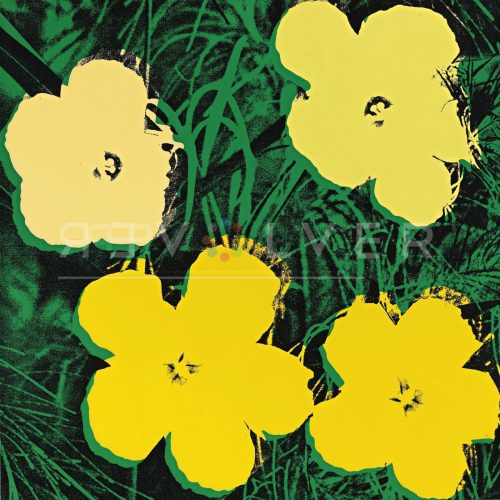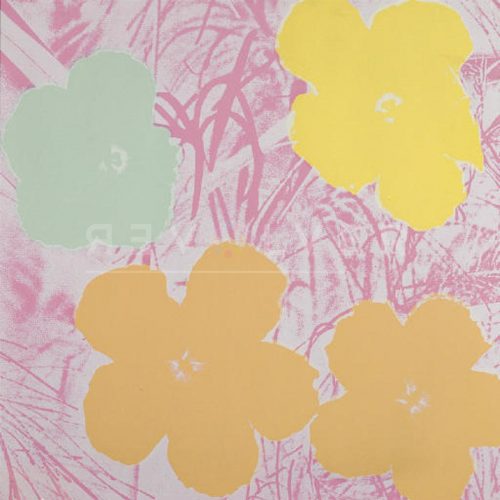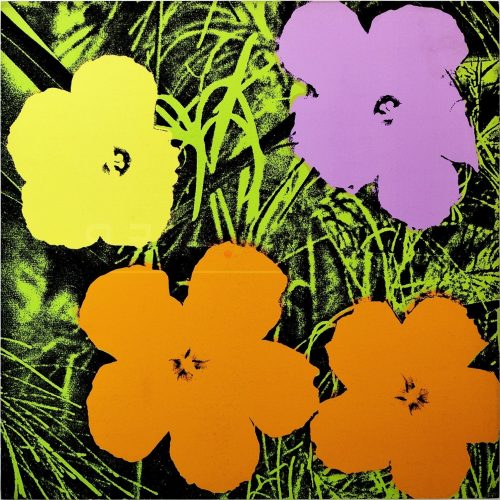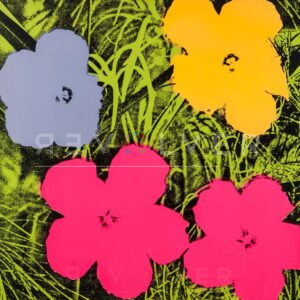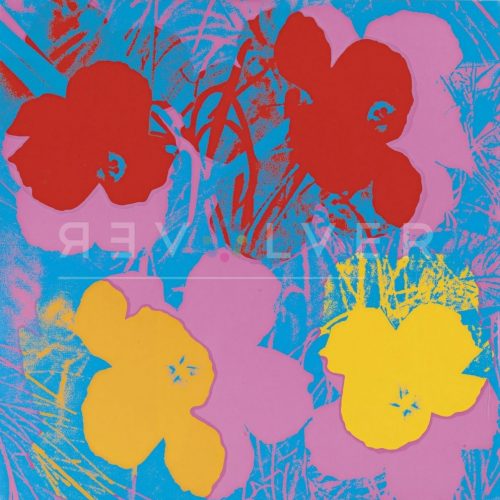Flowers 68 by Andy Warhol is one of the artist’s most beloved images. The complete Flowers series (1970) represents an early departure by Warhol from commercial and celebrity subjects towards depictions of nature. In spite of this thematic departure, the series exemplifies many characteristics and quirks for which we celebrate Warhol’s art. Like many of Warhol’s earlier screenprints, Flowers uses appropriated imagery; the basis of the work is a photograph of hibiscus flowers by nature photographer Patricia Caulfield. Warhol transforms this image with the silkscreen process, using his signature vibrant coloration and a hand-drawn background.
Warhol’s unconventional subjects became an early source of controversy for the artist. Some of his images, such as Campbell’s Soup Cans, made Pop Art the center of debate concerning which spheres of life contained meritable artistic value. Warhol believed that everyday items and objects had great human significance, and were thus worthy of artistic celebration. Early in his career, this philosophy manifested in Warhol’s controversial practice of representing consumer products. Above all, this is a reflection of his assigning importance to universally recognizable symbols and imagery. For Warhol, such images had widespread appeal, and were therefore both more accessible and more revolutionary as artistic subjects. This artistic ethos was also present in his iconic celebrity portraits which make up much of his most recognizable work, such as the Marilyn prints.
With Flowers, Warhol chose not to use an image that was recognizable in and of itself, as opposed to the well-known Campbell’s Soup labels or Marilyn Monroe’s famous headshot. But while the specific Caulfield photographs were not universally known, Warhol recognized the universality in flowers as a symbol of peace, purity, and natural serenity. The Flowers prints thereby retain the familiarity of a culturally universal symbol, calling to mind a storybook illustration or a familiar wallpaper. This sense of familiarity is heightened by Warhol’s surprising decision not to give the flowers sharp detailing, which is often seen in his other work. As a result, the flowers remain identifiable by their shape and their bright colors. This comfortably places them in Warhol’s world of recognizable and universal symbols taken from everyday culture. Like much his most famous pop art, Warhol believed these symbols contained their own unexplored artistic value.
Flowers 68 is a perfect encapsulation of the series’s artistic vision, as well as Warhol’s celebrated style. The bright green background is, on the one hand, psychedelic and animated in its neon hue. The lush color is a clear reference to nature and suggests a bush upon which the flowers are resting. The flowers provide vivid contrasts to the background, at once recognizably Pop Art and consistent nature’s vibrancy. The linework resists being identifiable and sharp as seen in Warhol’s other work. Rather, the line detailing blends into the flowers and only reveals their complexity upon close examination and contemplation. Flowers 68 is ultimately a classic Warhol image, which gracefully exhibits the Pop Art sensibility.
Photo credit: Andy Warhol silk-screening Flowers, 1965-7. Photo by © Stephen Shore.

